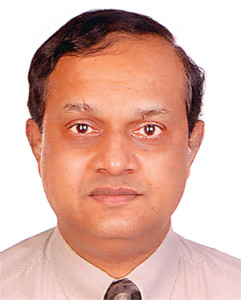
India needs to boost implementation of IT to create a well structured healthcare where there is an interpretation of paperless, seamless environment where all the data is available right from where the patient walks in at any entry point for any through hospital information system, says Dr Jagdish Modhe, Head of Imaging Department, PD Hinduja Hospital, Mumbai in conversation with Romiya Das of Elets News Network (ENN)
How do you see the healthcare infrastructure market in India compared to the global market?

The Indian healthcare infrastructure market needs to go a long way. The international market such as US and Europe is well structured and they importance to IT in terms of medical records are electronically stored. Unfortunately, in India not much importance is given to Healthcare IT. They feel that it is sort of nonrevenue generating thing for them and refrain from investment in this domain. There are few private and public hospitals in the country that have gone into full-fledged IT structure.
What are your views on HIS, RIS, PACS in India?
We are moving towards paperless, seamless environment where all the data is available right from the patient walks in at any entry point for any through hospital information system. This information is captured where any services rendered for instance when X-ray, CT scan or MRI is done it helps avoiding the mistakes regarding personal information. This forms the base of your records. The same information is transferred through the Radiology Information System (RIS) to the modality. With the advent of technology, all the images captured, they are transferred to the reporting or picture archiving and communication system (PACS) station. In this reporting station the soft copy report is viewed. The advantage here is time is saved and the different processes can be done sitting at one place. The system helps making the reports of the patients (with repetitive visits) easily available the reports of the tests done six months or year back, to compare with the present diagnosis. Therefore, it is easier to make the comparative reports. Also, with the digital signature procedure helps us to save time from manually signing the reports.

How does RIS, PACS technology affect healthcare IT and your opinion on your current service provider?
Did it meet all milestones? We have one of the longest experiences, we started with 2009 and recently in February this year we revamped the technology. Very few people understand about the entire HIS, RIS and PACS process in India. It is a solution unlike buying CT scanners or other equipment. It is important to design work flow depending on the environment of the hospital. The key is how all these are integrated. We are satisfied with the solutions provided to us by Agfa Healthcare. They are the focal point connecting us with other solution providers as well.
What are the unique challenges of Hinduja Hospital?
What we lack in our hospital is digitization of medical records. It is easy for a new hospital to start with EMR as they dont have any previous records. The challenge for us to integrating or digitising previous records and converting thirty year old reports is not an easy task. Therefore, integrating the previous records (inpatient and outpatient), lab reports is quite a task.
Be a part of Elets Collaborative Initiatives. Join Us for Upcoming Events and explore business opportunities. Like us on Facebook , connect with us on LinkedIn and follow us on Twitter , Instagram.













